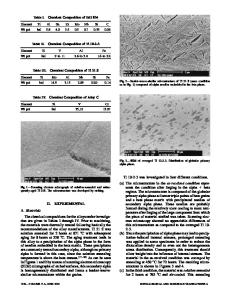Sensing mechanism of hydrogen storage on Li, Na and K-decorated Ti 2 C
- PDF / 3,847,271 Bytes
- 10 Pages / 595.276 x 790.866 pts Page_size
- 113 Downloads / 491 Views
Sensing mechanism of hydrogen storage on Li, Na and K‑decorated Ti2C Jiansheng Zhao1,4 · Wei Li1,2,3,4 · Ye Feng1,4 · Jinze Li1 · Gang Bai1,2 · Jie Xu1,2 Received: 21 August 2020 / Accepted: 2 November 2020 / Published online: 19 November 2020 © Springer-Verlag GmbH Germany, part of Springer Nature 2020
Abstract The adsorption of H2 molecules on Li, Na and K-decorated MXenes (Ti2C) has been investigated with first-principles calculations. A detailed examination of the adsorption mechanism of the Li, Na and K-decorated systems was presented by charge population analysis, electron density and partial density of states calculations. The results show that Li-decorated Ti2C system was found suitable for hydrogen storage. The maximum storage capacity about 4.33 wt% with a suitable average adsorption energy of − 0.26 eV/H2 can be obtained for two Li atoms, which adsorbed on both sides of the Ti2C. It indicates that Li-decorated Ti2C is of great significance for the wide application of MXenes in the field of hydrogen absorption. Keywords Ti2C · First principles · Electronic structure · Hydrogen storage
1 Introduction Developing high capacity, easy release and safety of hydrogen storage technology is crucial for hydrogen economy [1–4]. Due to its excellent chemical properties and unique morphology, MXene is widely used such as energy storage materials [5–9]. There are two mechanisms for this type of hydrogen storage. One is to induce the polarization of H2 molecules by increasing the electric field. And, the other is to hybridize H2 molecules by Kubas interaction [10–12]. In the polarization mechanism, metal atoms were adopted to modify two-dimensional materials to enhance the adsorption of H2 molecules. Many studies have proven the advantages of metal-decorated materials in hydrogen storage [13, 14]. Sheng et al. [15] reported that the co-doping of silicon through Li–Na was beneficial to the application * Wei Li [email protected] 1
College of Electronic and Optical Engineering and College of Microelectronics, Nanjing University of Posts and Telecommunications, Nanjing 210023, China
2
National Laboratory of Solid State Microstructures, Nanjing University, Nanjing 210023, China
3
State Key Laboratory of Millimeter Waves, Southeast University, Nanjing 210093, China
4
Research Center of Optical Communications Engineering and Technology, Nanjing 210023, Jiangsu Province, China
in the field of hydrogen storage, and its average adsorption energy was ideal (0.29 eV/H2). Ataca et al. [16] studied the Li-doped graphene as a good hydrogen storage medium, which improved the interaction between graphene and H2, resulting in a large hydrogen storage capacity (12.8 wt%). Although the decoration of transition metals can increase the reserves through Kubas interaction, it is easy to polymerize on the surface of two-dimensional materials due to its high cohesive energy [17–19]. Due to the fiery heat of lithium batteries, a lot of research on Li adsorption by MXenes [20, 21] were studied. It has shown the feasib
Data Loading...











